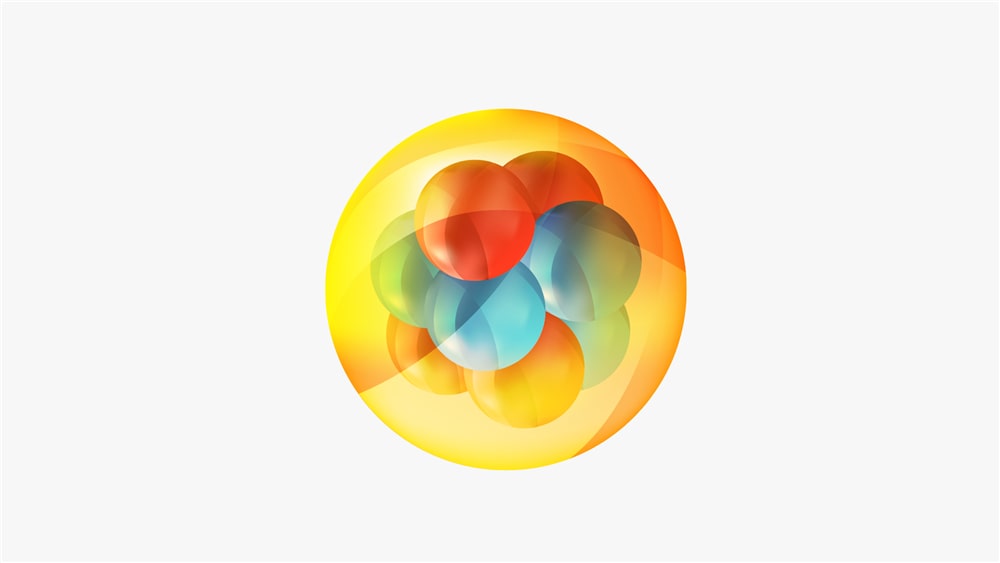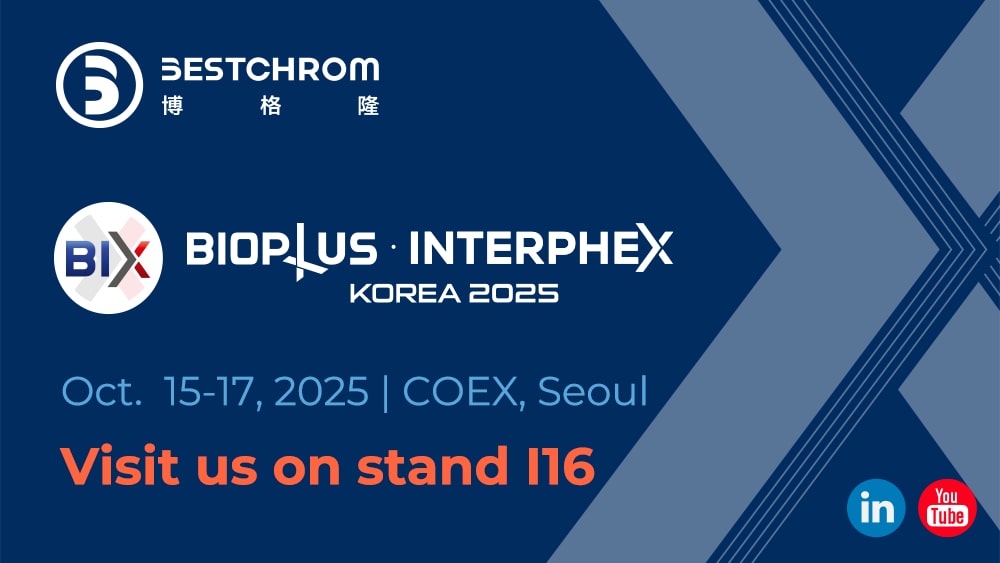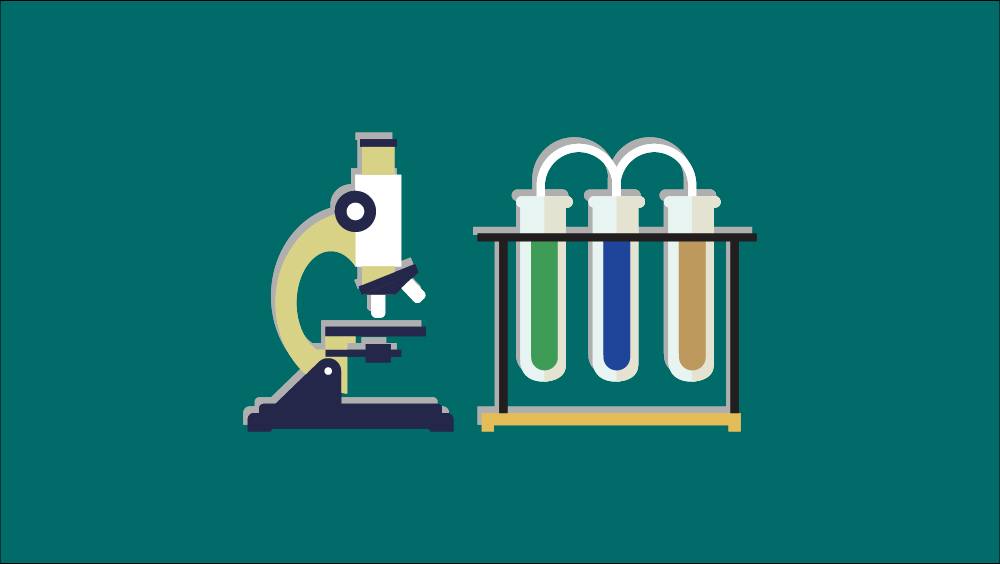The application of HIC resin in recombination protein
Hydrophobic interaction chromatography(HIC) is a separation method with great applicable value in protein purification. In 1948, Tiselius raised the concept to use hydrophobic interaction for protein separation. Not like ionic exchange chromatography which based on different charges on molecular surface, HIC achieves isolation by using hydrophobic difference of protein surface. Specifically, hydrophobic interaction among functional groups increases under high salinity condition, promoting the binding between proteins and resin surface.
In the production of recombinant proteins, impurities such as HCPs usually enjoy higher hydrophilicity whereas target proteins might have natural hydrophobic domain (e.g.constant region of antibody).This provides advantages for HIC resins in the removal of certain impurities. More importantly, HIC enjoys great flexibility in the production process. Specifically, it can be used in both capture under high salinity condition and intermediate purification under medium salinity condition. Additionally, a combination of HIC and IEX can be used for polishing step with buffer adjustment usually being required.
Basic purification mode of HIC
Common operational modes of HIC include B/E mode and F/T mode.
B/E mode: Process mainly consists of equilibration, sample loading, washing, elution and regeneration. Generally speaking, load sample under high salinity condition , which enables resin’s bind to target molecules by enhanced interaction between HIC functional groups of proteins and reins. After washing, by gradually lowering salinity of elution buffer, molecules are eluted based on binding strength and finally achieve separation/purification of molecules.
F/T mode: When choosing resins with high hydrophobicity, with no salt or only low concentrated salt being added on sample loading, target molecules will not interact with HIC resins and flow through, whereas impurities with high hydrophobicity will be retained and finally being removed.
HIC ligands types and hydrophobic interaction strength
_1756104325_WNo_1000d519.webp)
Table 1. Ligands hydrophobic interaction strength of HIC resins
|
Ligand type |
Hydrophobicity |
Application |
Typical products |
|---|
|
Butyl-S |
weakest |
Suitable for highly hydrophobic and easily denatured proteins. Reduce binding to prevent activity loss due to difficult elution. |
Butyl-S Bestarose FF |
|
Butyl |
weak |
For proteins with intermediate or strong hydrophobicity and relatively low stability(e.g.part of enzymes). Reduce elution difficulty while keeping binding. |
Butyl Bestarose FF |
|
Octyl |
Intermediate-strong |
For proteins with intermediate or weak hydrophobicity , increase binding efficiency via strong hydrophobic interaction. |
Octyl Bestarose FF |
|
Phenyl |
strongest |
For proteins with weak hydrophobicity. Aromatic ring can provide hydrophobic interaction andπ-π interaction, improving binding strength and selectivity. |
Phenyl Bestarose FF |
HIC resins and hydrophobicity comparison
_1756104362_WNo_1000d451.webp)
Core advantages of HIC resin in the purification of recombinant proteins
Selectivity from unique mechanism
• Separation based on surface hydrophobic disparity: solvation of HIC functional groups is weakened under high salinity condition (e.g. 1.0-2.0 M (NH4)2SO4). This leads to proteins’ tendency to reversibly bind to HIC resin ligands (Phenyl, Butyl, Octyl). Then, by lowering salinity (or adding mild additives), gradually elute proteins based on binding strength.
• Effective separation of molecules with similar charges based on different hydrophobicity. For example, HCP having similar pI compared with that of target molecules. This can be complementary to IEX based on charge disparity.
• Mild elution, remained activity: by lowering the salinity gradient elution, which does not require extreme pH or high proportion of organic phase(comparison: RPC requires high concentration organic reagents), keep native conformation and bio-activity of proteins to the largest extend.
Key Application advantages
• Efficient removal of specific impurities.
Host Cell Protein(HCP): Proteins with high hydrophobicity can bind tightly to reins and therefore be removed selectively.
Aggregates: Due to large hydrophobic surface area, aggregates can be absorbed early and eluted later than monomers, which helps the control of aggregates in sample.
Endotoxin and nucleic acids: with the right salt type and buffer condition, HIC can lower co-elution to some extent. However,it can usually meet impurity removal standards when combining with AEX flow-through/TFF.
• Good process transition and throughput
Seamless connection with IEX/salting-out: for high salinity sample or samples being precipitation processed by (NH4)2SO4, if salinity is adjusted to target and sample is clarified (be filtered by 0.22μm), directly load sample, to cut desalting/buffer exchange(whether to eliminate TFF is dependent on viscosity/conductivity window ).
High through-put: high rigid HIC resin (e.g. Diamond Phenyl) enjoys good mechanic strength and can be used at high linear flow, enabling improved production capacity and equipment usage via multiple column switches/column parallel connection.
Case study
Case 1: Purification of recombinant vaccine with HIC resin
• Resin:Diamond Butyl Mustang
• Sample: Captured eluted sample after mixed-mode chromatography
• Mobile phase 1:high salinity Buffer,pH7.0
• Mobile phase 2:Low salinity Buffer,pH7.0
• Regeneration:ultra-purified water
_1756104432_WNo_1000d489.webp)
Fig.1 Chromatogram and electrophoretogram of recombinant protein using HIC resin
Experimental results
After HIC, SEC purity shall be improved by 3% or above.
Case 2: Purification of recombinant protein with HIC resin
• Column:BXK16/20 10cm bed height, CV=20mL
• Resin:Phenyl Bestrose 6 Fast Flow (high sub)
• Sample:Yeast culture supernatant,add 0.5M (NH4)2SO4
• Sample volume:450ml (22.5 c.v.)
• Flow rate:300cm/h (loading) 60cm/h (elution)
_1756104476_WNo_1000d452.webp)
Fig.2 Chromatogram of recombinant protein purification using HIC resin
Case 3: HIC resin used for the purification of recombinant protein
• Resin:Phenyl Bestrose 6 Fast Flow (high sub)
• Sample: go through 0.22μm Filter
• Mobile phase 1:high salinity Buffer pH7.2
• Mobile phase 2:low salinity Buffer pH7.2
_1756104524_WNo_3750d1555.webp)
Fig.3 Chromatogram and electrophoretogram of recombinant protein using HIC resin
HIC technical parameter optimization tips
The choice of ligands
• Short-chain alkyl ligands(Butyl、Butyl-S etc.):
Relatively weak hydrophobicity, suitable for proteins with strong hydrophobicity or low stability, avoid elution difficulty or declined activity caused by excessively strong bind.
• Long-chain alkyl ligands(Octyl etc.): Intermediate or relatively strong hydrophobicity, suitable for the proteins with intermediate hydrophobicity, improved separation efficiency via increased binding strength.
• Aromatic ligands (Phenyl etc.): The highest hydrophobicity, in addition to HIC, it might be involved in π–π interaction, be especially effective to proteins with low hydrophobicity and proteins which can easily flow through.
Salt types and concentrations
• The selection of bind-promoting salt(Hofmeister sequence, strong to weak):(NH4)2SO4 > Na2 SO4 > NaCl
• Commonly used concentration:
Load sample/equilibration:1.0~1.5M(NH4)2SO4(2.0M can be used in some process to improve bind)。
Elution: Linear salt reduction or gradient salt reduction to nearly 0M.
Note:Excessively high salt concentration will increase the viscosity of the solution, raise the operating pressure, and pose a risk of precipitation at the column entry end.
PH Control
• Recommended pH 6–8:Keep the stability of protein conformation, reduce chemical injury to ligands and base matrix caused by extreme pH.
• For proteins sensitive to conformation or aggregation, it is possible to improve stability by adding mild cosolvent to elution buffer (e.g. Glycerol, ethylene glycol).
Conclusion
Based on advantages including high selectivity, mild elution condition, high removal ability of specific impurities, HIC resins have become an indispensable unit in the purification process of recombinant proteins .
Typical Applications:
1. Enzymes, antibodies and other molecules which require high activity and can tolerate high salinity condition.
2. Target molecules have similar charge property as that of impurities, which makes it hard to isolate by IEX.
3. Production process requires efficient removal of aggregates and HCPs.
4. Direct capture of target proteins after salt-out or high salinity pre-treatment.
By selecting the right ligands, precisely setting the right salt types and gradient, combining with optimized pH and other conditions, as well as the synergic design of AEX/TFF units, it is possible to achieve good balance between higher purity and high recovery in the purification process of recombinant proteins.
Order Information
|
Resin |
Pack size |
Cat.No. |
|---|
|
Phenyl Bestarose FF (HS) |
25mL |
AH0021 |
|
Phenyl Bestarose FF (LS) |
25mL |
AH0021 |
|
Diamond Phenyl (HS) |
25mL |
AH321305 |
|
Diamond Phenyl (LS) |
25mL |
AH311305 |
|
Diamond Phenyl Mustang |
25mL |
AH301205 |
|
Phenyl Bestarose HP |
25mL |
AH201105 |
|
Butyl Bestarose 4FF |
25mL |
AH0011 |
|
Diamond Buytl |
25mL |
AH0111 |
|
Diamond Butyl Mustang |
25mL |
AH303205 |
|
Butyl Bestarose HP |
25mL |
AH0071 |
|
Butyl-S Bestarose FF |
25mL |
AH0061 |
|
Octyl Bestarose 4FF |
25mL |
AH0051 |
|
Diamond Octyl |
25mL |
AH302305 |
|
Diamond Octyl Mustang |
25mL |
AH302205 |
|
Octyl Bestarose HP |
25mL |
AH0081 |









.png)


